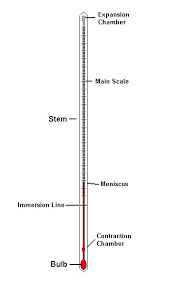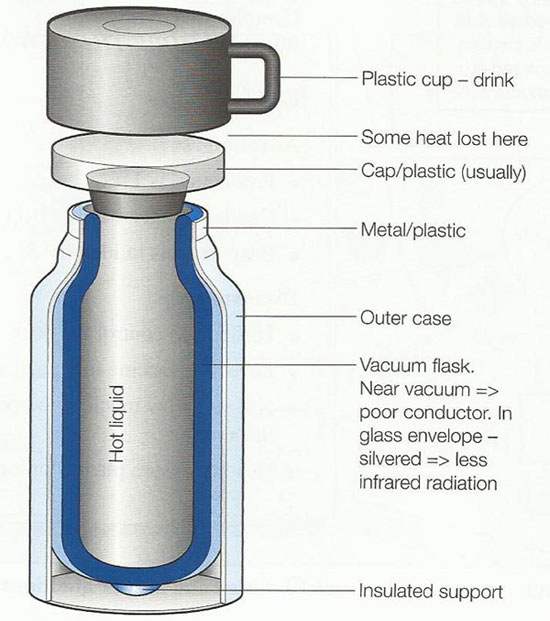Question: Explain the construction and working of a clinical thermometer with the help of a diagram.
Answer: A clinical thermometer is used to measure the temperature of human body. the normal approximate temperature of a human body is 37° C or 98.6° F but it varies depending on age, activity, time of the day, environmental conditions, etc. It rises or falls under a state of illness. Any rise beyond 40°C or 104°F is a medical emergency and requires immediate treatment.
The capillary tube of a clinical thermometer has a kink or bend that does not allow the mercury to flow back into the bulb before the temperature has been read. The mercury column breaks at the kink when it contracts due to decrease in temperature. It prevents the mercury column from falling beyond this point.
This is the reason why we have to shake the thermometer before taking a new reading. The jerk sends the mercury back into the bulb.
Question: Explain the construction and working of a thermos flask with the help of a labelled diagram.
Answer: A thermos flask maintains the temperature of the substance kept in it, that is, it keeps a hot substance hot and cold substance cold for long a long time.
The outer casing of a thermos flask is made up of plastic or metal. Plastic, being a poor conductor of heat, acts as an insulator preventing the heat loss through conduction. Inside it, is a double-walled container made of glass or stainless steel. Both the walls are polished so they are shiny. The space between the two walls is a vacuum; this prevent prevents heat loss through convection since there are no air particles to carry out the transfer of heat. the shiny surface of the walls also prevents heat loss through radiation.
 Class Notes NCERT Solutions for CBSE Students
Class Notes NCERT Solutions for CBSE Students





Not so good but it’s OK. Sometimes good for exams.
Not bad ha good for me!
Nice but not bad useful during exams
Yes. True, You should add more questions
What is the difference between Mercury thermometer and a Digital thermometer ?
SO USEFUL FOR MY EXAMS